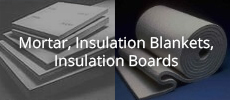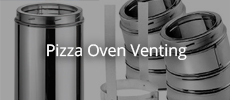X
-
The area near the arch is where you need to pay attention or you get what is called the dreaded droop. Make adjustments over several courses.
-
Hi Pizza Oven Officianados! It's been a minute but I haven't entirely passed this time idlly. Here in Portland, OR we've transitioned from a lingering, cold, wet winter to a record-breaking heat wave! Since my last update a month ago I've put in some work at both extremes of the temperature guage. Currently I am working on the 4th course of bricks in my dome. Things seem to be going pretty well.
I was joined in my build by my friend Gus yesterday, and we laid most of the latest course, knocking off in the afternoon as the temp soared past 90-F. I told Guy there's a policy against having his likeness in photos until the second day of help. He has the link to this thread, so hopefully Gus, I'll see you again!
The only Issue I have at this point is that I am starting to get slightly out of level on one side were the dome connects to the opening arch. The bubble is still between the lines on my level, but is touching a line on one side. So I figure the answere is a little estra mortar on the next course to bring it back into level.
Leave a comment:
-
Mac , Looks like you're working through it but UtahBeehiver always says, "The last brick of the day, place one on back center of the new course so it can set and gives you an anchor to work from." It was one of the quotes that made it into my research notes!
It certainly made my life easier.
- Likes 1
Leave a comment:
-
Today I could only get in a half day, as the morning was spent supervising my son's driving practice. His driver's test is coming up on Tuesday, so we spent a couple hours cruising around town. No accidents, but I did get an elevated heart rate a couple times. It's amazing how much energy it takes for new drivers to stay focused on the road. After two hours of driving we got home and my son was ready for a nap.
As for the oven, I finished cutting all the bricks for the second course. Then I had to refresh myself on the home brew formula. I doubled my batch to have extrat mortar for the tilt, but only had enough for 2/3rds of the course. It was fine though, as my morter was getting a little difficult to work in the end.
I was a little intimidated with the mortar work to start, but things went pretty smoothly. I think setting the first 2 - 3 bricks in the course is the most challenging bit as they all want to move a little. But after I had 3 bricks down the course was pretty stable. From that point I just started alternating between each end - place a brick, tap it in place, and the let it stabilize while I worked on the other side.
I finished the day by covering all the work in process with wet terricloth towels and a tarp. Here's the latest pics. You can see that I'm about ready to do some 1/2 width bricks to get my joints staggered.
One thing that started to become clear today - this oven is going to be really tall! I think I can do 2 - 3 more courses from the ground. I'm also starting to think that maybe a 36" diameter would have been fine. I image that I could be making more progress at this stage if I didn't have so many brick to lay for each course. But no regrets - This oven is going to be great for back yard parties!
Leave a comment:
-
Good tip. I manage to do the first side cut by setting saw once and then processing all bricks. The second side-cut I couldn't just setup once for a couple reasons:- Minor variations in brick width requires adjusting the miter gauge. This is where having the bricks marked on the second side is pretty helpful.
- The tilt angle is only 1.5 degrees, which is pretty hard to visually oberve, which increases risk of setting the brick upsidedown on the second cut.
In any event, measure twice, cut once, and measure again!
Another shortcut, I have my hose with a garden sprayer on it a little loose so water is constantly dripping into my bucked with the water pump. The rate of flow is about the same in and out so I don't have to pause to refill the bucket.
Between each cut I also clean the debris off the wet saw table.
Leave a comment:
-
I had similar experience trying to use the spread sheet. I ended up just setting up each row by eye and when I was dialed in cut all the bricks the same. I picked up a cheap sliding Tee bevel that came in very handy. Similar to your protractor but I think maybe more handy in transferring angles, marking bricks and using it to set your saw.
Another thing I learned, albeit a little late, addresses staggered joints. If you are planing on placing your bricks to minimize joint alignment, start in the back/rear of the oven and work towards the arch on either side. This way any bricks you have to cut to less than full width are out of sight and it's easy to stagger the joints. When you start the next row just place the first brick so it straddles a joint in the rear and repeat the process. I used a few partial bricks early on near the rear and it kind of screwed me in that I had to do custom cuts most of the way up to keep the joints from aligning. I thought this would help prevent cracking, but I had some cracks that went right through the center of a brick, but it does make for a nice clean look on the oven interior. .1 Photo
Leave a comment:
-
And, back again! Folks, that was a long, wet, cold winter! But Spring is here, the flowers are blooming, trees are budding and the oven is building! Today while getting setup I had a eurika moment with the final brick in my first course that was sticking up. I got the angle grinder out and ground the brick down until it was flush with the rest of the bricks. Problem solved!
Today I started on the second course of bricks, and found after playing around with jig 2.0 that it's easier to cut the bricks just using the miter guage and tilt blade on my saw.
Also found after another miscut that I cannot just "set it and forget it" when it comes to cutting those angled, beveled cuts. I'm using the metal protractor pictured below to mark my cuts, which is pretty slow. But at least I can verify that Everything looks right before cutting and I have a nice visual reference for each brick. I also use a digital angle gauge to set the angle on the saw blade.
Hoping to finish the second course tomorrow.
Leave a comment:
-
Well - I got back to the build today but didn't make much progress.
Started by inspecting the grout following our winter storm a few hairline cracks observed in the mortar, but mostly it looks good except for my final brick in the first course where mortar got under the brick. There I can see daylight through the crack, but I do not think the gap is wide enough to fill unless someone has a tip. I don't think I could get a trowel blade in the gap, so I suppose I can just live with it, unless some wise builder tells me it cannot be ignored. If I do anything, now is the time since I haven't started course 2.
Otherwise I started work on using jig to cut bevels and angles on course 2. Figuring out how to stabilize the jig so it doesn't slip while cutting, and also thinking about compound angles, which direction is "back" and how, after cutting a compound angle on 1 side, I was going to achieve the mirror cut on the uncut side. A lot of brain cells lost their life on this mission, and in the end I decided it was too cold and wet to continue.
Here's where I'm at on the cutting - first all of my bricks for tge second course are alread cut in half. (In the future I will try doing the 3-cut approach mentioned on the forum). Since the bricks are cut, provided I can stabilize my jig so it doesn't slip, I'll start by cutting one side of every brick with the jig slope and fence set for the correct angles per the oven dome calculator.
Once side 1 is complete, I will move the jig to the opposite side of the table and position the jig fence parallel to the blade to cut the second side. But this is where my brain starts to melt. Should I position the fence parallel to the blade? Or should I be doubling the side angle to account for the existing cut on side 1? Or maybe I don't change the fence to the opposite side, in which case I flip the brick and come up with a different answer on the fence angle?
Or I could ask the pros. And that's where I left it. Advice welcome!
Thank you!
Mac
Leave a comment:
-
Ah, the joys of winter building. I used a big gazebo to keep the worst of the weather off.
Leave a comment:
-
Well the weather forecast was wrong and was projected to be 1"-2" of snow became 7". On the plus side, my space heater is kicking out the heat and keeping the hearth warm. With 4 layers of tarp plus a layer of snow I'm hoping that the mortar stays insulated while curing.
Lowest temp is projected to be 20 over the next few days.
Last edited by Macrinehart; 02-26-2023, 10:24 AM.
- Likes 1
Leave a comment:
-
Well, I decided based on the duration and eposidic severity of this storm to put the space heater in. The dome is covered with four layers of tarp secured with straps and the space heater is under the hearth, which ia also fully enclosed by the outermost tarp.
I imagine it's pretty toasty warm below the hearth, although I doubt that has a huge effect through 4" of concrete, two inches of calsil and the oven floor. But the most extreme temps are a couple days ahead, when it gets into the teens at night and I imagine over the course of that time I'll be glad I turned on the heater.
Here's the latest, about 2" of accumulation but the wind is causing some drifts to build up.
Leave a comment:
-
That fixed point for the marker on the offset for the IT should work just fine imo.
Yes, the early curing will generate a little heat. If the temps are just a little below freezing I usually place a tarp over the project. Below 27, I will place something to give a little space between the tarp and the fresh laid brick. Anything nearing the low twenties I will just place an incandescent light underneath and separated from the coverings. If the teens are expected, your call.
Leave a comment:
-
Snowing! Looks like the weather report calls for a wintery mix of snow and rain for the next week with lows near or a little below freezing and highs a little over freezing. Should I get the space heater going under my hearth to try and maintain above freezing for my mortar, or just let it ride?
I've heard that the chemical reaction process generates a little heat that can help maintain the temp above freezing but not sure if that is adequate to prevent freezing and cracks in the mortar joints...
Thanks!
Leave a comment:
-
Gulf - I thought I'd share picks of my coping saw attachment to the IT. My IT has a 3/8" threaded rod, which was too big to attach directly to the coping saw, which had a 1/4" hole to attach the frame. In addition I noted you're using a pencil, hand held with the coping saw frame as a guide. I had some tools to convert a wooden yardstick to a compass from the local art/drafting store that are attached directly to the coping saw frame.
Pick 1 is parts. Note I have a 1/4" machine screw that I put through the coping saw frame and the wrapped with plumber's tape to increase diameter to > 3/8".
next up, coping saw attachment assembled. I used the lead holder from the compass attachment and a cup washer to attach the lead holder to the coping frame.
Finally, the attachment on my IT.
Last edited by Macrinehart; 02-21-2023, 11:35 PM.
- Likes 1
Leave a comment:
-
Great picture Gulf! At the risk of potential regret later, I decided not to reposition my arch form again. Instead I indexed the back of each brick to my IT set at the IR. I also verified that the arch form is centered and square. It's about an 1/8" of an inch too far forward but I didn't want to reposition it.
Today I cut the front face of the arch bricks so that they are all flush at the front. Actually, I think within about 1/16". Then I mixed up my first batch of home brew and mortared my first course on the dome. Managed to finish the course, get some pics and just got things cleaned up and covered as it was getting dark.
A few notes on method. First I positioned all the bricks without using mortar and used a 1/8" piece of lathe for a spacer. I mixed up the mortar to about the consistency of creamy peanut butter. I also soaked my bricks in water before applying the mortar. My joints stayed pretty true to 1/8" thickness, In the course of completing the circle I ended up with about 3/8" extra mortar, so I had to cut down the last brick a bit.
I am building the dome on the oven floor and did not place any mortar on the bottom of the bricks, based on prior guidance. Well, all except the last brick but that was not intentional.
one observation is that because the dome bricks were not mortered to the floor, the wall had a tendency to slip and warp a little as I was tapping my bricks into place. Once I had the full circle set, I used the IT set at IR to check the entire circle made some adjustments by tapping the exterior of the bricks to true up the circle. I also used a wet sponge to clean the bricks perodically.
It looks pretty good, but I worry a bit about the adhesion of mortar to bricks, particularly with the circle warping a bit as I worked my way around. The one known issue is the last brick, which I slipped in from the top. On the way down it scraped some mortar off the sides of adjacent bricks and got a little bit of mortar on the bottom. I was able to sqeeze most of it out, but I figure I'll have to true up the elevation on the next course. Pictures below.
Last edited by Macrinehart; 02-21-2023, 11:43 PM.
Leave a comment:





Leave a comment: